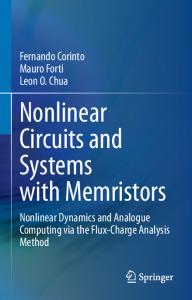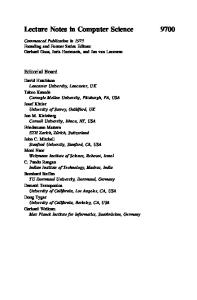A quantitative method for silica flux evaluation
- PDF / 1,601,049 Bytes
- 11 Pages / 603.28 x 783.28 pts Page_size
- 119 Downloads / 401 Views
I.
INTRODUCTION
I N copper and copper/nickel sulfide concentrates, iron and sulfur can be regarded as the main impurities other than oxidic and siliceous gangue. As a result, the basis of the pyrometallurgical processing of these sulfides is one of selective oxidation and removal of iron and sulfur. Sulfur is oxidized to gaseous SO2 and removed from the system while iron is oxidized to FeO, which is completely miscible in liquid FeS. Although iron is selectively oxidized, it is not removed from the melt unless silica flux is added to react with FeO to form a fayalite slag which is immiscible with the sulfide phase. Maximum phase separation occurs under conditions of silica saturation, m This separate liquid slag phase acts as a sink for the oxidized iron. The fluxing reaction can be written as
2FeO m + Si02(~) = Fe2SiO4(slag )
[1]
Inefficient fluxing gives rise to magnetite control problems. The magnetite formation reaction is given by 3FeO(/) + 1/202(g) = F e 3 0 4 ( s )
[21
The troubles associated with magnetite are often manifested as problems relating to phase separation, l>< The formation of false furnace bottoms and a mushy layer between matte and slag, as well as entrapment of matte particles by solid magnetite, are typical examples of poor phase separation. In general, the effectiveness of the fluxing practice is related to slag formation which, in turn, reflects the effectiveness of the phase separation. As many furnaces are pushed far beyond their designed production rates, R.H. SCHONEWlLLE, Graduate Student, G.J. O'CONNELL, Graduate Student, and J.M. TOGURI, INCO/NSERC Professor, are with the Department of Metallurgy and Materials Science, University of Toronto, Toronto, ON M5S 1A4, Canada. Manuscript submitted July 9, 1992. METALLURGICAL TRANSACTIONS B
the rates of slag formation and magnetite dissolution become even more important. As a means of quantifying the effectiveness of the silica flux, a standardized test was developed. It was necessary that the test meet the requirements of being quick, simple to perform, and the results easy to interpret and consistently reproducible. Meeting these criteria makes the test useful directly within the smelter.
II.
PRINCIPLE OF METHOD
Poor fluxing involves not only the quality of the flux materials themselves but many other factors, such as temperature and method of addition. The present study is concerned with the silica reactivity which is a function of the chemical, mineralogical, and physical state of the flux material. Since the role of the flux is to "tie down" the FeO according to Eq. [1], it should be possible to evaluate this reaction as a function of the flux material. Kinetic studies on the dissolution of magnetite in Fe-S-O mattes have been carried out by Kaiura and Toguri tTI as well as by Asaki e t al. 18J This reaction is written as FeS(o + 3Fe304~s) = 10FeO(t) + SO2(g)
[3]
Kaiura and Toguri 171 have reported that the kinetics of Reaction [3] are quite fast, while Reaction [1] is significantly slower. Therefore, assuming that the syst
Data Loading...











